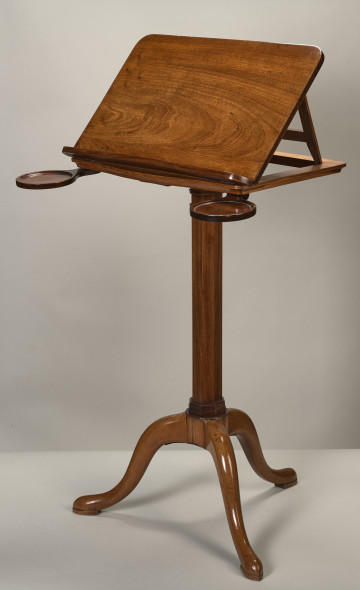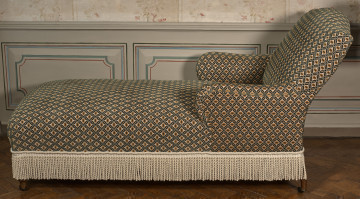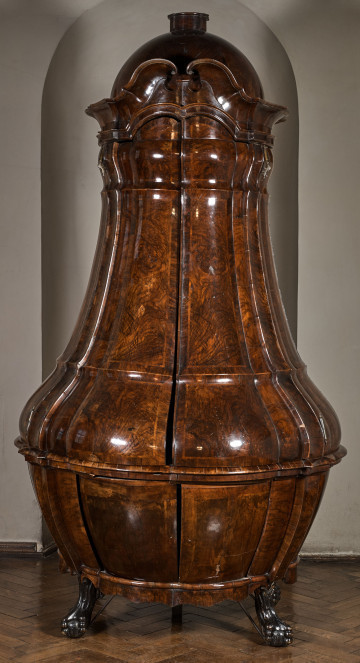
Wooden desktop
18th-19th century
Castle Museum in Łańcut
Part of the collection: Meble i wyposażenie wnętrz
Sofa, as a piece of furniture with a skeletal structure, appeared in its developed form in France at the end of the 17th century. The origin of this piece of furniture can be traced back to ancient loungers and later seats, including Oriental ones. Its Polish name, kanapa, is derived from the French word ‘canapé’. The names describing other varieties of this piece of furniture – sofa, ottoman – were borrowed from Turkish. In Europe, the sofa, originally treated as a large armchair used as a seat for two people, was eventually extended to be used by several people. Over the course of the 18th and 19th centuries, this piece of furniture became widespread in salons, boudoirs, libraries, waiting rooms, study rooms, as well as lobbies. Sofa became a component of a uniform lounge set together with armchairs and chairs. To this day, sofas are placed in public places either individually, in pairs or in sets. The sofa in question belongs to an older type of French solutions, with a seat supported by eight legs. In fact, its design recall two armchairs separated by a connector. The individual elements such as seat and backrest with a gap between them, handrails with armrests, curved cabriole legs and woodcarving ornaments were shaped in the same way as in Rococo armchairs and chairs ‘a la reine’ (see S.752MŁ). Teresa Bagińska-Żurawska https://orcid.org/0000-0002-9243-3967
Author / creator
Dimensions
height: 104 cm, width: 200 cm
Object type
Furniture and interior fittings
Technique
inlaying
Material
wood
Creation time / dating
Creation / finding place
Owner
Castle Museum in Łańcut
Identification number
Location / status

18th-19th century
Castle Museum in Łańcut

20th century
Castle Museum in Łańcut

18th century
Castle Museum in Łańcut
DISCOVER this TOPIC
Museum of King Jan III's Palace at Wilanów
DISCOVER this PATH
Educational path